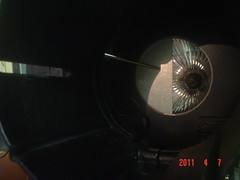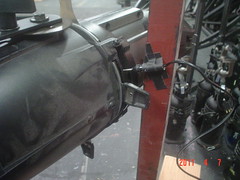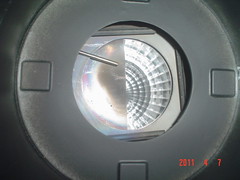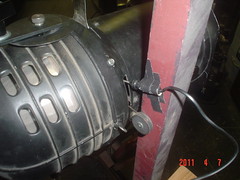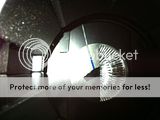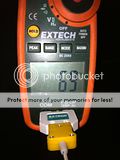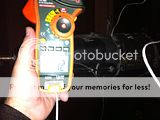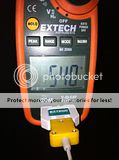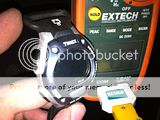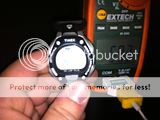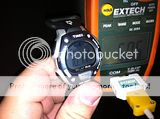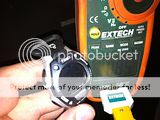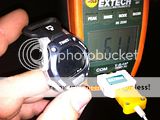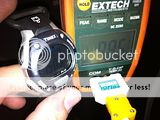So the time has finally come to post the results of the tests I’ve done. In order to verify that my probe was accurate and working I decided to boil some water on the stove and check the reading on the probe against another thermometer I had lying around. Both of them came in around 200-202°F which told me that my probe was fairly accurate when I did the tests.
When I conducted the tests I placed each of the lights, one at a time, onto one of our trees and then turned it sideways so that the accessory slot was now on the side instead of on the top. I did this to keep excess heat from ruining my equipment. I then built a
jig that would hold my probe for me that I would just have to position right before I turned the
instrument on. When I positioned the probe I tried to get it as close to touching the backside of one of the shutters that I had shuttered in half way.
Alright the results:
S4 575W
Power:120.7v Lamp:
HPL/120v/575W
05 min: 261°F
10 min: 290°F
15 min: 308°F
S4 750W
Power:121.2v Lamp:
HPL/120v/750W
05 min: 330°F
10 min: 361°F
15 min: 386°F
360Q 575W
Power:120.5v Lamp: HX600
05 min: 579°F
10 min: 682°F
15 min: 745°F
Now you’re all probably wondering where the 750W measurements are for the
360Q. I was unfortunately unable to obtain a 750W lamp for the days that I would have been able to do the testing. So here is what I did: I decided to divide the S4 575W measurement by the S4 750W measurement in order to get a ratio for the difference between the two. The average ratio I got for all three measurements is 0.797 rounding to the first three decimal places. (i.e. [308/386] = 0.797)
Once I had this ratio I was able to
project what the results would be for a
360Q with a 750W lamp. The results are as follows:
360Q 750W
05 min: 726°F
10 min: 856°F
15 min: 935°F
Now I’m sure some of you have been wondering why my results were so much lower than what
ETC has stated to be what the
gate temperature of a S4 is. Don’t worry I wondered this as well. Without knowing the specific details of how they conducted their tests, I can’t replicate them exactly. When I asked my TD about it he said it could be due to the way our instruments were manufactured. My solution was to take the numbers I’ve got and readjust them for if I had gotten the same measurements as
ETC at my highest temperature.
To do this I took my measurement and divided it by
ETC’s measurement and got another ratio. For the 575W lamp I got 0.495 (308/622) and for the 750W lamp I got 0.491 (386/786). Once I had this ratio I applied it to the numbers I have for the
360Q and got the following:
360Q 575W 1505°F (745/0.495)
360Q 750W 1904°F (935/0.491)
It is important to note that these are adjusted numbers assuming
ETC’s numbers are correct. (I’m not saying that they are incorrect, just that I have different data then they did).
So the official number I have for the
gate temperature of the
360Q with a 750W lamp…well that’s the thing, seeing as how my numbers are projected for the 750W to begin with and I also readjusted the numbers for if I got the same results as
ETC it’s hard to say. So take which one you like best and
call that the
gate temperature of the
360Q with a 750W lamp.
If anyone wants to confirm or deny any of my data and back it up with their own testing it may help us to zero in on what the
gate temperatures of these instruments really are.
Photo Documentation:
Top row S4, bottom row
360Q



